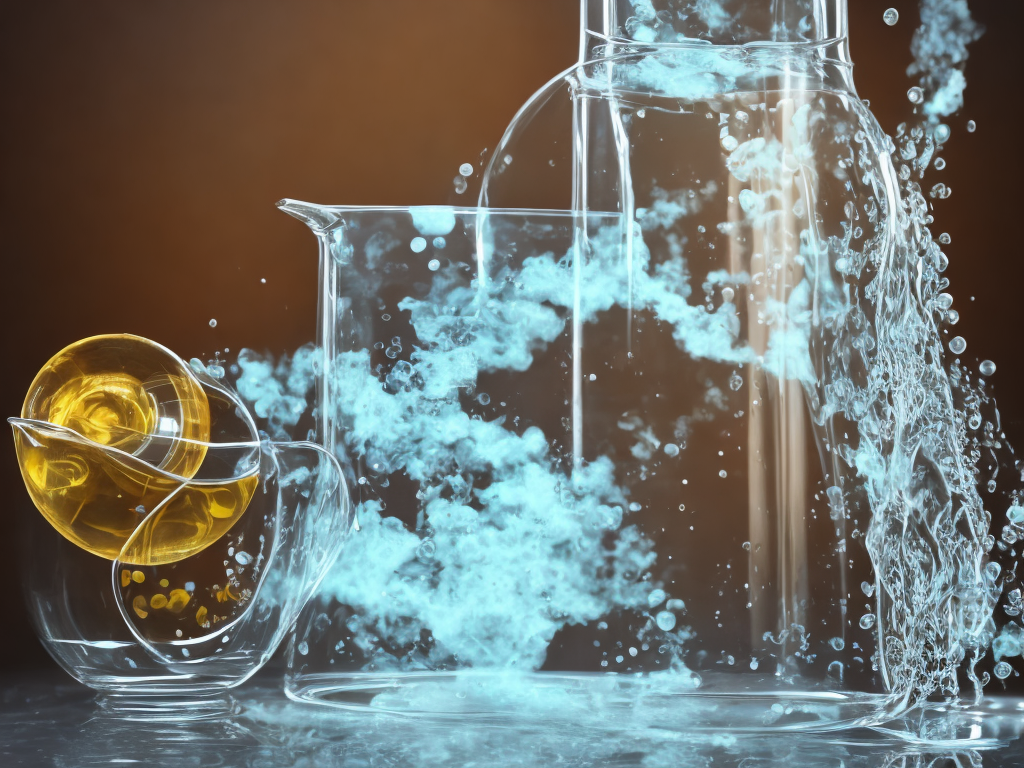
Hydronium ions, also known as H3O+, are essential in many chemical reactions and are one of the most critical chemical species. They are formed from the reaction of water molecules (H2O) with hydrogen ions (H+), which makes up a simple but crucial acid-base reaction. The process of hydronium ion formation is a vital part of chemistry and has important implications for many scientific fields, such as biology and environmental chemistry.
The formation of hydronium ions begins with the dissociation of a compound in water. In this process, the ionic compound releases ions into the solution by breaking apart its ionic bonds. In some cases, such as when an acid dissolves in water, the dissociation process leads to the release of hydrogen ions (H+). For example, when hydrochloric acid (HCl) is dissolved in water, it dissociates into H+ and chloride ions (Cl-). The equation for this reaction can be written as follows:
HCl + H2O ↔ H3O+ + Cl-
The arrow in the equation indicates that the reaction is reversible, meaning that the hydronium ions can react with the chloride ions to reform the original hydrochloric acid and water. This equilibrium between the reactant and product is a characteristic of most acid-base reactions and plays an essential role in many chemical processes.
Once the hydrogen ions are released into the solution, they react with the water molecules to form hydronium ions. This reaction occurs because the hydrogen ions are highly reactive and have a strong affinity for the negatively charged oxygen atom in water molecules.
The reaction between H+ and H2O can be represented by the following equation:
H+ + H2O → H3O+
In this reaction, the hydrogen ion (H+) combines with a water molecule (H2O) to form a hydronium ion (H3O+). The reaction is an example of a proton transfer, where the hydrogen ion transfers its single proton to the water molecule, resulting in the formation of the hydronium ion.
Hydronium ions have a tetrahedral molecular shape, with the oxygen atom at the center of the tetrahedron and the three hydrogen atoms located at the corners. This shape is due to the hybridization of the oxygen atom's orbitals, which allows it to bond with the three hydrogen atoms and form a stable molecule. The presence of the extra hydrogen ion in the molecule makes the molecule more acidic than water and makes it a powerful acid, which can react with many other chemical species.
Hydronium ions play a crucial role in many chemical and biological processes. For example, they are involved in the acid-base balance in the human body, where they help to maintain the pH of bodily fluids at a constant level. The pH scale is a measure of how acidic or basic a solution is, and a pH of 7 is considered neutral. A pH less than 7 is acidic, and a pH greater than 7 is basic. The pH of different parts of the body varies depending on the function of the areas. A blood pH of 7.4 is optimal for the functioning of cells in the body; any deviation from this can lead to severe health problems.
In addition to their role in biological systems, hydronium ions are also critical in environmental chemistry. For example, acid rain is formed when sulfur dioxide and nitrogen oxide are released into the air by factories and vehicles. These compounds react with water in the air to form sulfuric acid and nitric acid, which can then fall to the ground as acid rain. The acidity of the rain is due to the presence of hydronium ions, which are formed when the acids dissociate in the presence of water.
In conclusion, hydronium ions are an essential chemical species that are formed by the reaction of water molecules with hydrogen ions. The reaction leads to the formation of tetrahedral-shaped molecules that are highly acidic and can participate in many chemical reactions. Hydronium ions are crucial to many biological and environmental processes, and their formation and behavior are vital in understanding the chemistry of these systems.
 Self-Instruct
Self-Instruct